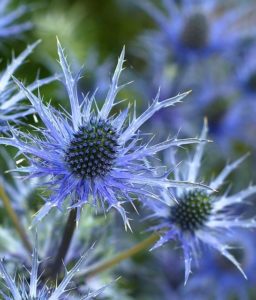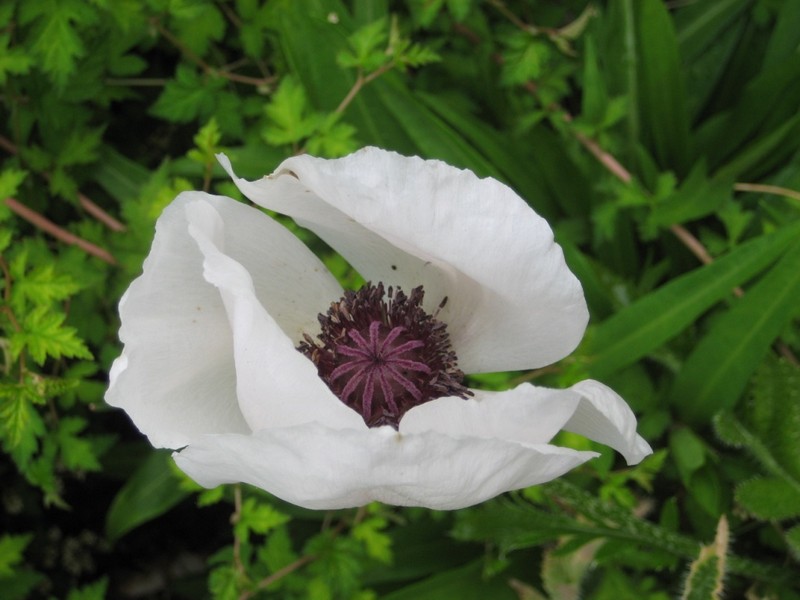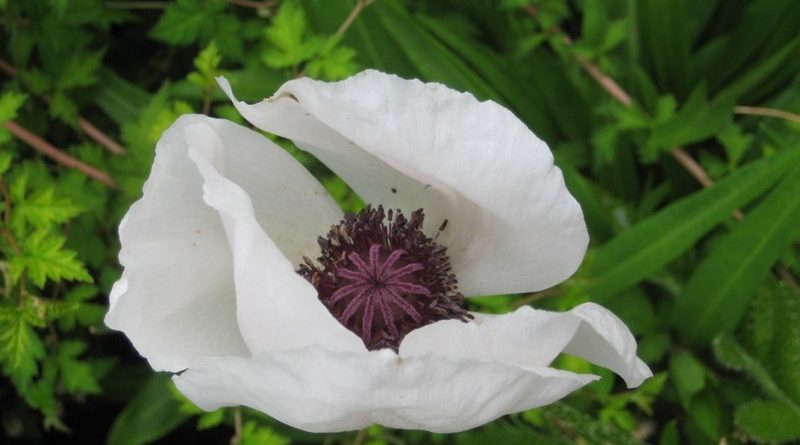The art of a garden revamp
Lena Creedy
My garden took a twist 10 years ago when we decided to strip the wooden materials from the façade of our brick house. This included removal of the old veranda, balcony, and some of the siding, all in wood and badly needing painting, but also starting to rot. We considered the pros and cons of carrying on with the usual maintenance or selecting an alternative material, and in the end committed to a different visual theme featuring stonework and a remodelled entrance, which would need little maintenance and also would give more space for the garden.

Photo Lena Creedy
This decision demanded that we extricate our perennials from the front garden during the time of the renovation. This was not an easy job as I have some treasured plants, several dating back more than ten years, and one that had been with us for over thirty years, and which we brought with us from our previous house when we moved to Ottawa. While I transferred a variety of hostas to the rear garden and donated others, plants like a rhododendron, a Japanese yew tree, peonies, and pachysandra required storage at the rear with their own soil in jute or plastic bags, with the bags left open for watering.
Assiduously, I drafted a garden plan identifying paths, stone areas, the location of light or other fixtures, and the location for the existing plants, while marking areas for new ones. When the stonework on the façade was completed, I had the earth dug and the connection for light fixtures put in place before layering new topsoil enriched with mushroom compost. When the time came to plant, I was careful to place shredded bark mulch around the plants to prevent weeds from accessing sunlight, and to keep the soil moist. A garden facing north doesn’t have the advantages of abundant sunlight associated with south-side gardens, so more scrutiny is needed in the selection of plants to thrive there. Sometimes it is more reasonable to leave a space bare while identifying what may be more suitable.
Revamping my garden gave me an opportunity to experiment with new plants and rekindle my connection to old companions, like the yew, in a different location. After setting up a small pond and fountain, I added the effect of the Japanese blood grass ‘Red Baron’ around it, and expanded the presence of Stephanandra incisa ‘Crispa’ by the pavement, for its crinkled purple-red leaves in the fall. An additional welcome was provided by the summer fragrance of Lavandula angustifolia ‘Hidcote Superior,’ and the white falls of intermediate bearded iris ‘Infinity Ring,’ with its deep purple edges and mauve upright petals.

Photo Jacksons Nurseries
Eryngium x zabelii ‘Big Blue’ was an unusual kind of sea holly with large iridescent blue flowers and thorns that aroused the curiosity of passersby. Interest was also stimulated by the clusters of fragrant, shell pink, tubular miniature flowers at the ends of the branches of Daphne x burkwoodii ‘Carol Mackie.’ Pachysandra terminalis ‘Silveredge’ and Hibiscus syriacus ‘Blue Chiffon’ (Rose of Sharon) are a constant delight.
While it takes a couple of years for the garden to settle in and acquire its shape, all the work and efforts are truly rewarding. Having the basic layout in place permits you to play around when the results are not as expected. The joy of gardening comes with the benefits of relaxation, keeping fit, and the pleasure of doing what you like.

Photo Lena Creedy
